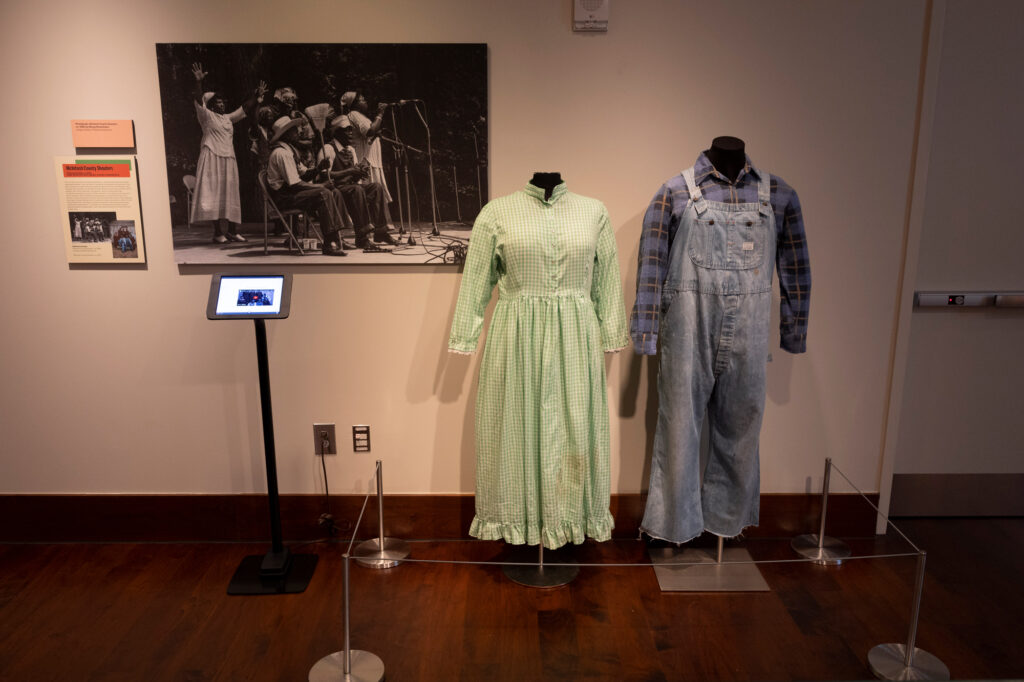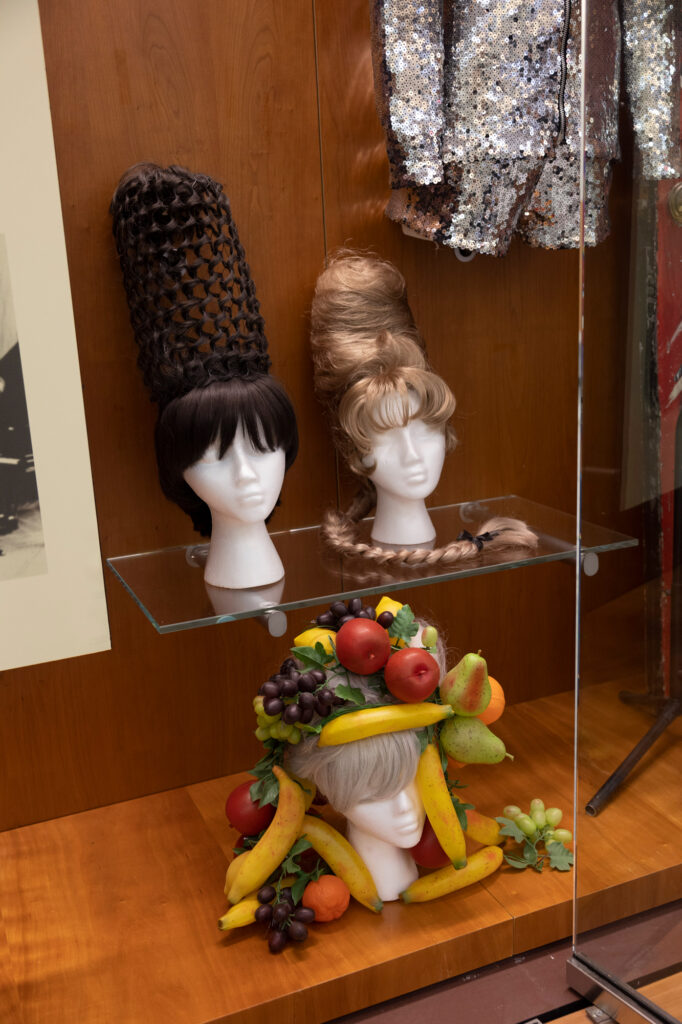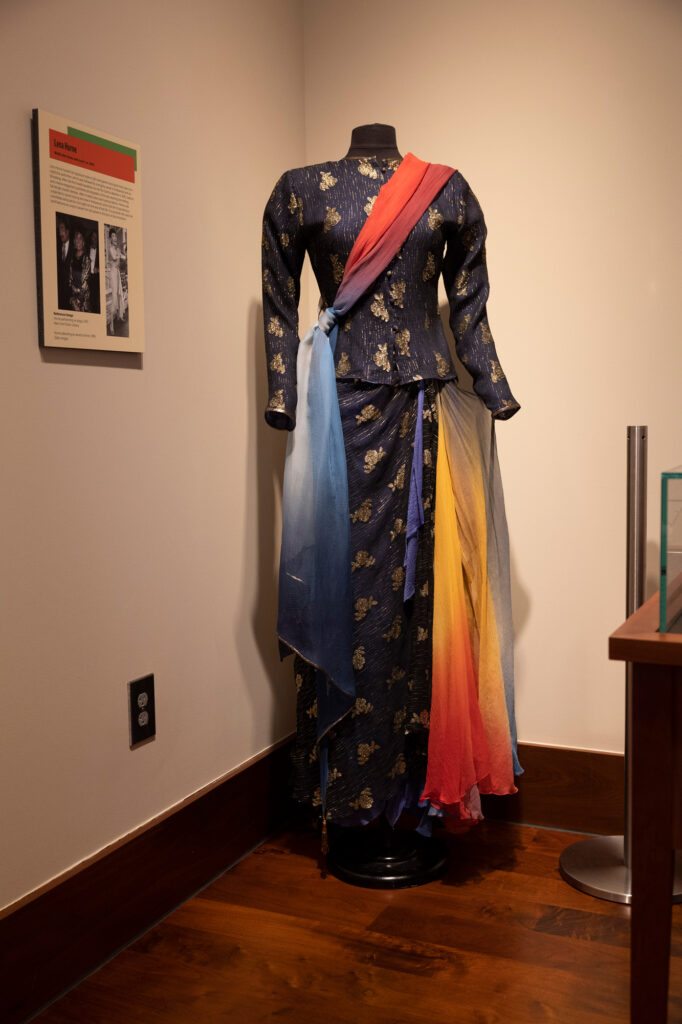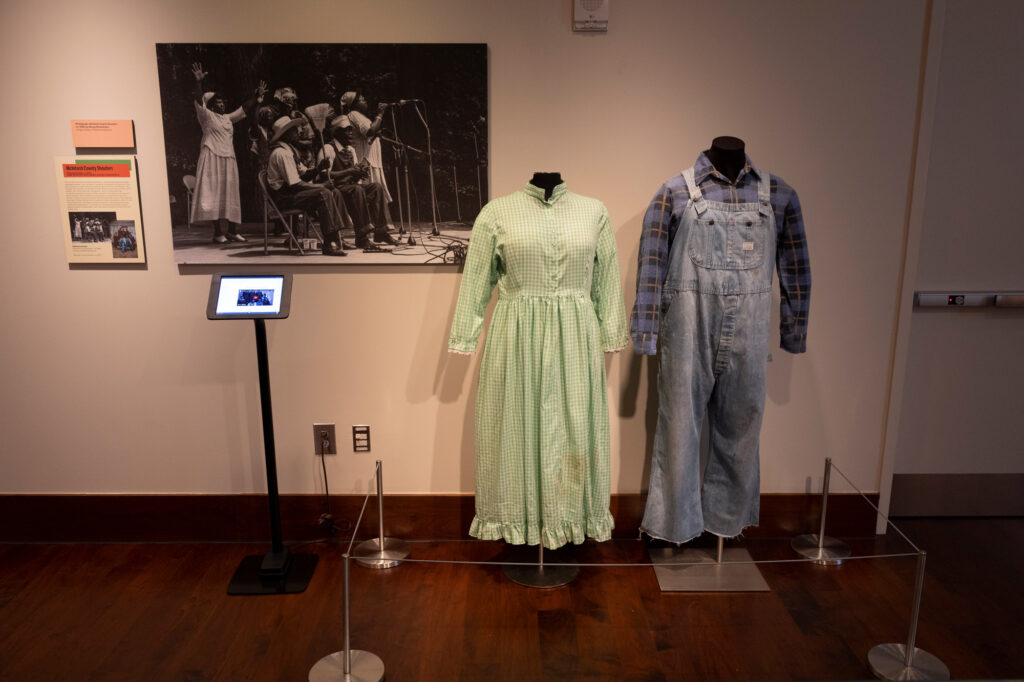Otis Redding, Whisperin’ Bill Anderson, Outkast, R.E.M., Gladys Knight, Alan Jackson, Lena Horne, the Allman Brothers Band, TLC.
See the common thread yet?
Trisha Yearwood, the Indigo Girls, Ma Rainey, Little Richard, Lil Nas X, Toni Braxton, Johnny Mercer, Ray Charles.
How about now?
Their music, personas, and stories are just as rich, diverse, and complicated as the state from which they hailed.
“Georgia, Georgia. The whole day through.”
Thanks to music streaming services, the sound of Georgia is as accessible as a high-speed internet connection.
But does that accessibility also come at a cost if our only exposure to music comes passively?
Is something missing if our only musical experiences are solitary—just our mobile phones transmitting songs directly into our earbuds? Do we miss out if all the songs we hear are curated by an algorithm that knows just enough about our tastes to keep us listening?

The Power of the Tangible
If so, Georgia music lovers can dig even deeper into the music, the musicians, and the communities that forged the sound at the University of Georgia’s Special Collections Libraries.
The Hargrett Rare Book & Manuscript Library, one of three special collections at UGA, stores a growing collection of Georgia music artifacts that range from elaborate performance costumes, concert posters, and instruments to a robust assortment of other memorabilia that breathe life into the state’s musical traditions.
The Walter J. Brown Media Archives & Peabody Awards Collection, which is one of the nation’s largest publicly accessible media archives, preserves Georgia music’s audio and video recordings.
The collection’s genesis began with the Georgia Music Hall of Fame in Macon, which celebrated the state’s musical heritage from 1996 until it closed in 2011. Much of that collection came to Athens just as the Special Collections Libraries Building opened.
Since then, the Hargrett Library has worked to fill in and expand its holdings to fully capture the breadth of the state’s music.
Think about some of the all-time classic hits from Georgia musicians.
The Allman Brothers’ “Sweet Melissa,” the B-52s’ “Love Shack,” and TLC’s “Waterfalls” all stand alone as remarkable works of art.
But there’s something about seeing the physical objects related to the songs or musicians—an apologetic “Do Not Disturb” sign scribbled by Gregg Allman on a crumpled manila envelope, the painted door to the Love Shack from the 1989 music video, or a TLC concert poster.
There’s power in the tangible, says Jan Hebbard, exhibition coordinator at the Hargrett Library. Perhaps especially so in our digital age.
“People connect to music,” Hebbard says. “And they love these original pieces that are part of that history. These physical things, like the instruments and the ephemera, are just something I feel like everybody has a connection to.”
If that’s the case, Maggie Neel, a UGA doctoral student in history, will remember the ins and outs of Georgia music for some time.
“People connect to music. And they love these original pieces that are part of that history. These physical things, like the instruments and the ephemera, are just something I feel like everybody has a connection to.” — Jan Hebbard, exhibition coordinator in the Hargrett Rare Book & Manuscript Library
Each summer, the UGA Special Collections Libraries hires student workers to curate exhibitions of the libraries’ holdings. Neel came on board in 2020 to curate the first exhibition for the music collection since the Georgia Music Hall of Fame’s closing.
This past fall, the Hargrett Library featured the “Georgia on My Mind: Finding Belonging in Music History” exhibition on the second story of the Special Collections Building, complete with flashy performance costumes, authentic instruments, and other artifacts on display.

Although Neel has never focused her academic study on music, she fully immersed herself in the topic. She built a 10-plus hour Spotify playlist of Georgia music brimming with gospel, hip hop, Southern rock, alternative rock, country, roots, R&B, classical, jazz, and so much more.
In the summer of 2020, Neel had limited access to the library’s material due to pandemic restrictions. So she listened to hours and hours of Georgia music while conducting online research for the exhibition.
When she could finally come in and handle the objects, well, that’s when the magic happened.
Neel says there’s a kind of aura to some of these objects.
“There’s something about the material that has communicative, inspirational, and evocative power that just words on a page or lectures don’t have,” she says.
For instance, a Ray Charles performance outfit was missing buttons, and sweat marks stained the armpits of a shiny silk jacket. The blemishes reveal something about the performer, noted Sara Idacavage, a fashion historian working on her doctorate at UGA’s College of Family and Consumer Sciences. The wear and tear reveal a legendary performer’s work ethic and humanity— even icons get pit stains.
When objects are stored in the special collections vault, they’re often in a sterile white box that blandly lists the contents. Still, there’s an alluring anticipation in lifting the lid to see what’s inside. An experience akin to tearing open a Christmas present.
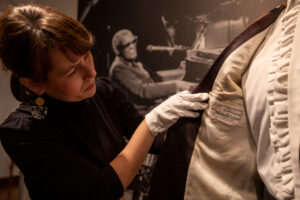
“That moment where you bring something out, and you didn’t know what it was going to be or look like or feel like, and then you get that moment of like, ‘Oh my gosh, That’s it!’” she says. She once opened a box labeled to contain a suit worn by Whisperin’ Bill Anderson ABJ ’59. She was astounded when out of the box she pulled a bright red, intricately embroidered, rhinestone-studded cowboy suit—a genuine Nudie suit from the famous tailor Nudie Cohn. Anderson wore the elaborate ensemble on the cover of his 1967 greatest hits album.
“Realizing that, oh my gosh, this was something I could never have expected. It was incredible.”
The Future of the Music Collection
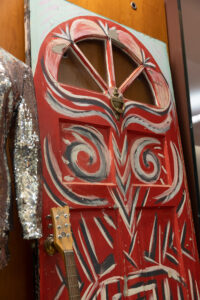
The Georgia music exhibition went on display in August 2022 and came down four months later. Currently, individual items are available upon request for the public to view and even handle, in most instances, at the Special Collections Libraries Building.
But the music isn’t over yet.
The Special Collections Libraries is working on expanding its holdings to be more representative of Georgia’s diverse tradition.
“The Georgia Music Hall of Fame collection we inherited was incredible and very diverse as it was, but it wasn’t as diverse or reflective of Georgia music as it could have been,” Neel says. “Part of my work was to identify what genres, musicians, areas, etc., were underrepresented in the collection. The library has been addressing those gaps by targeting new acquisitions in that area.”
In January, the libraries hired a new Georgia music curator, Ryan Lewis, to grow the music collection.
